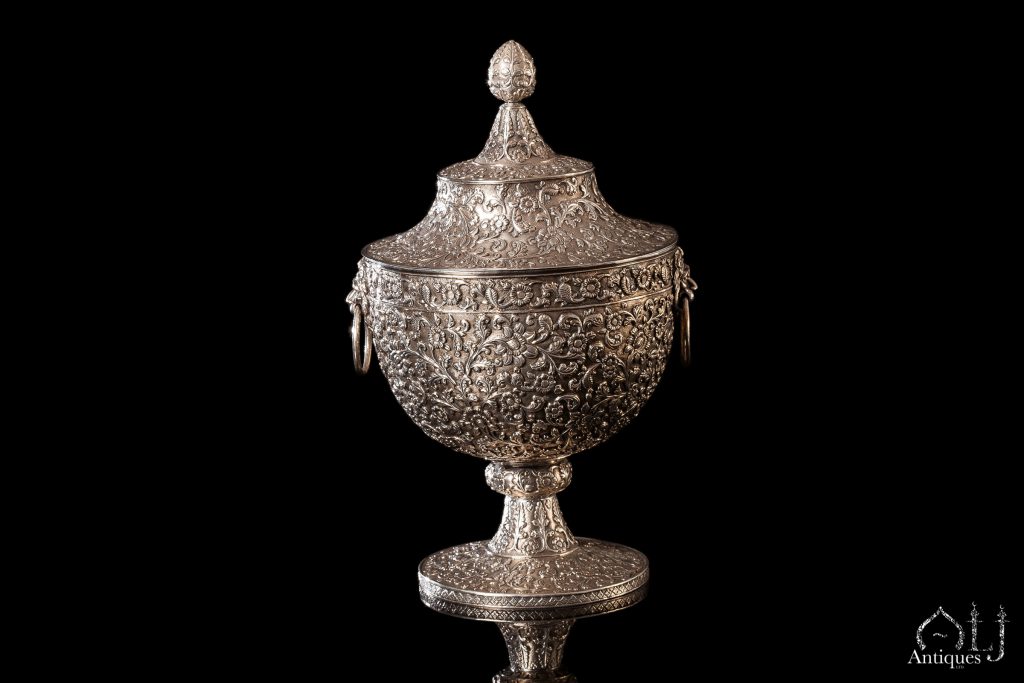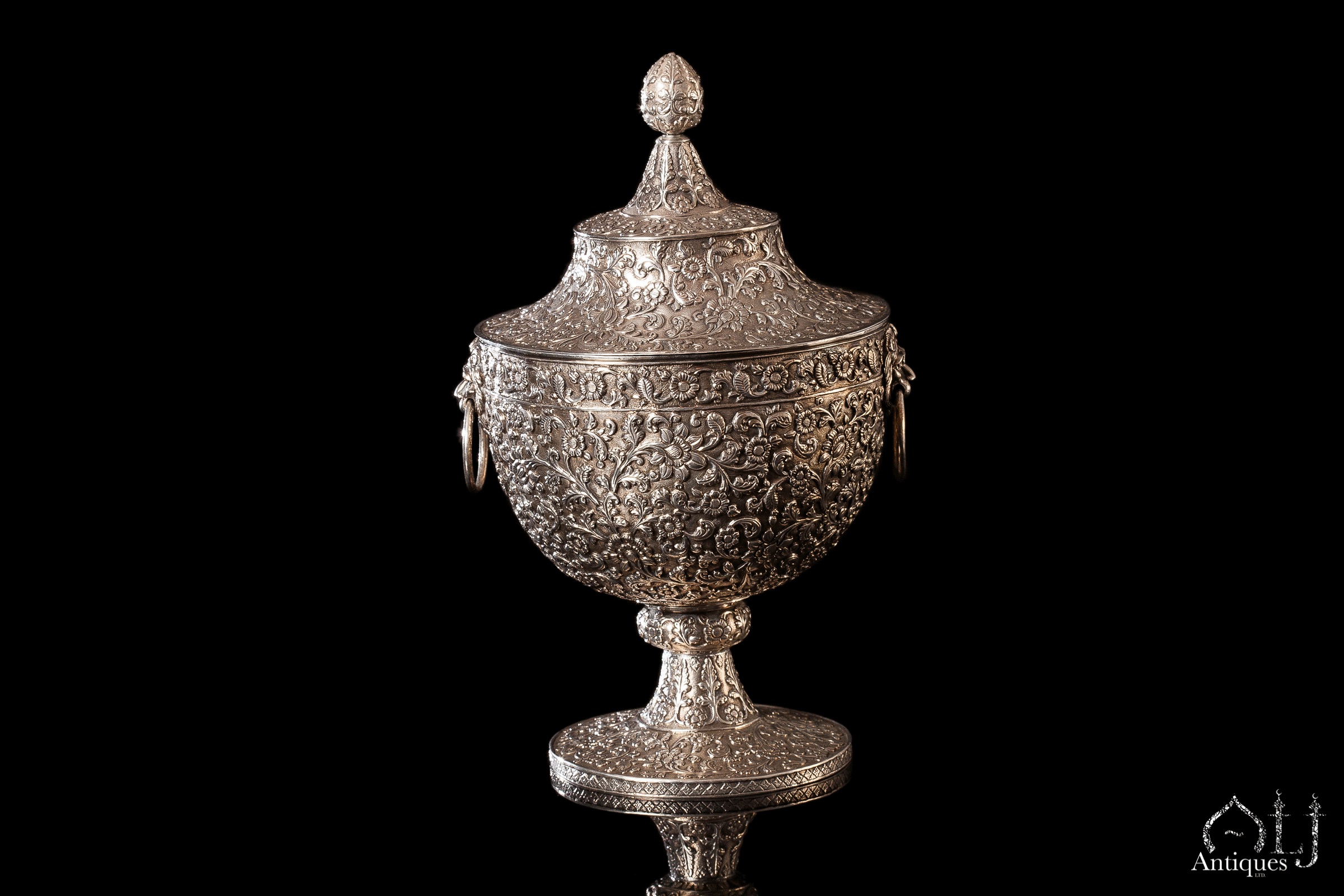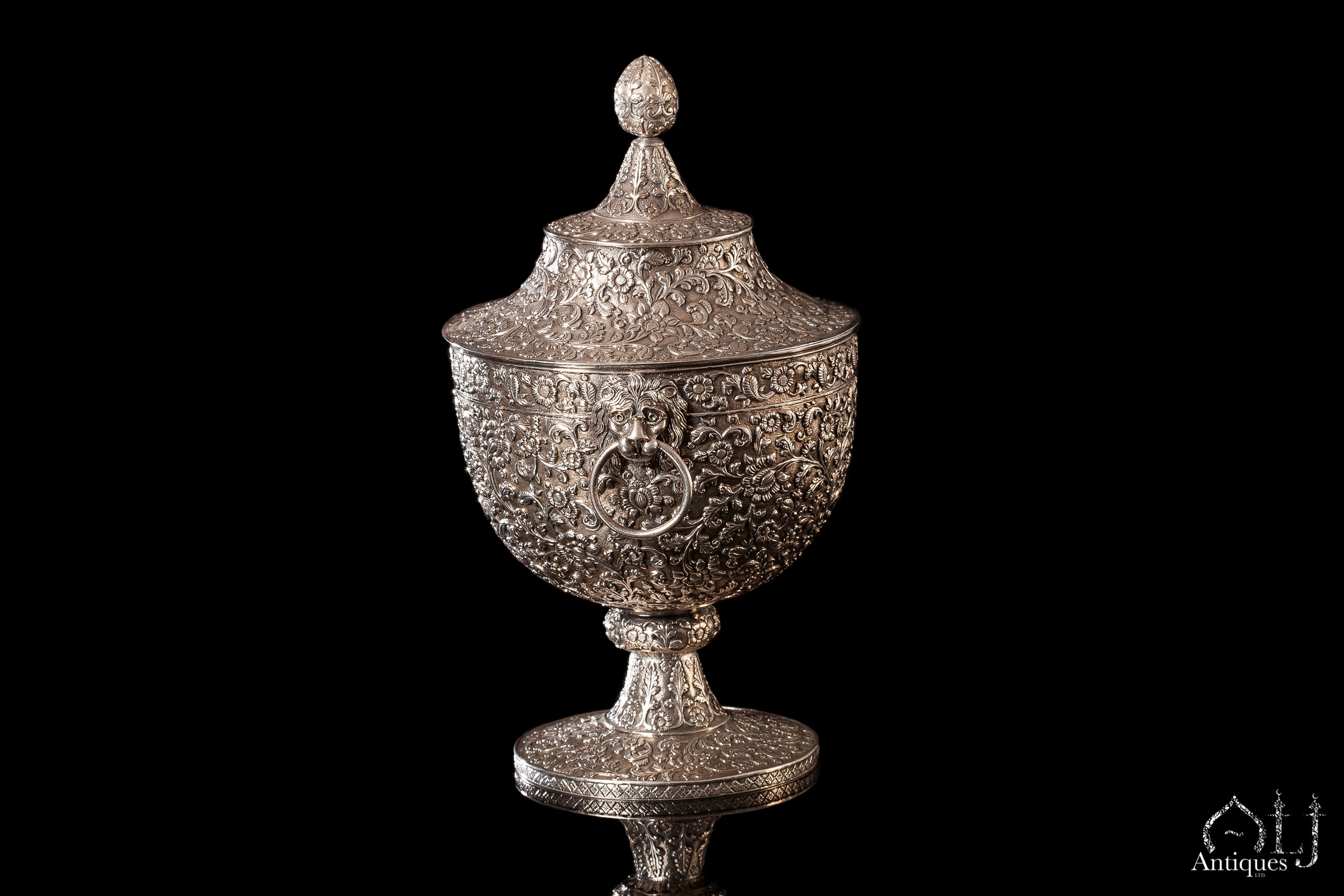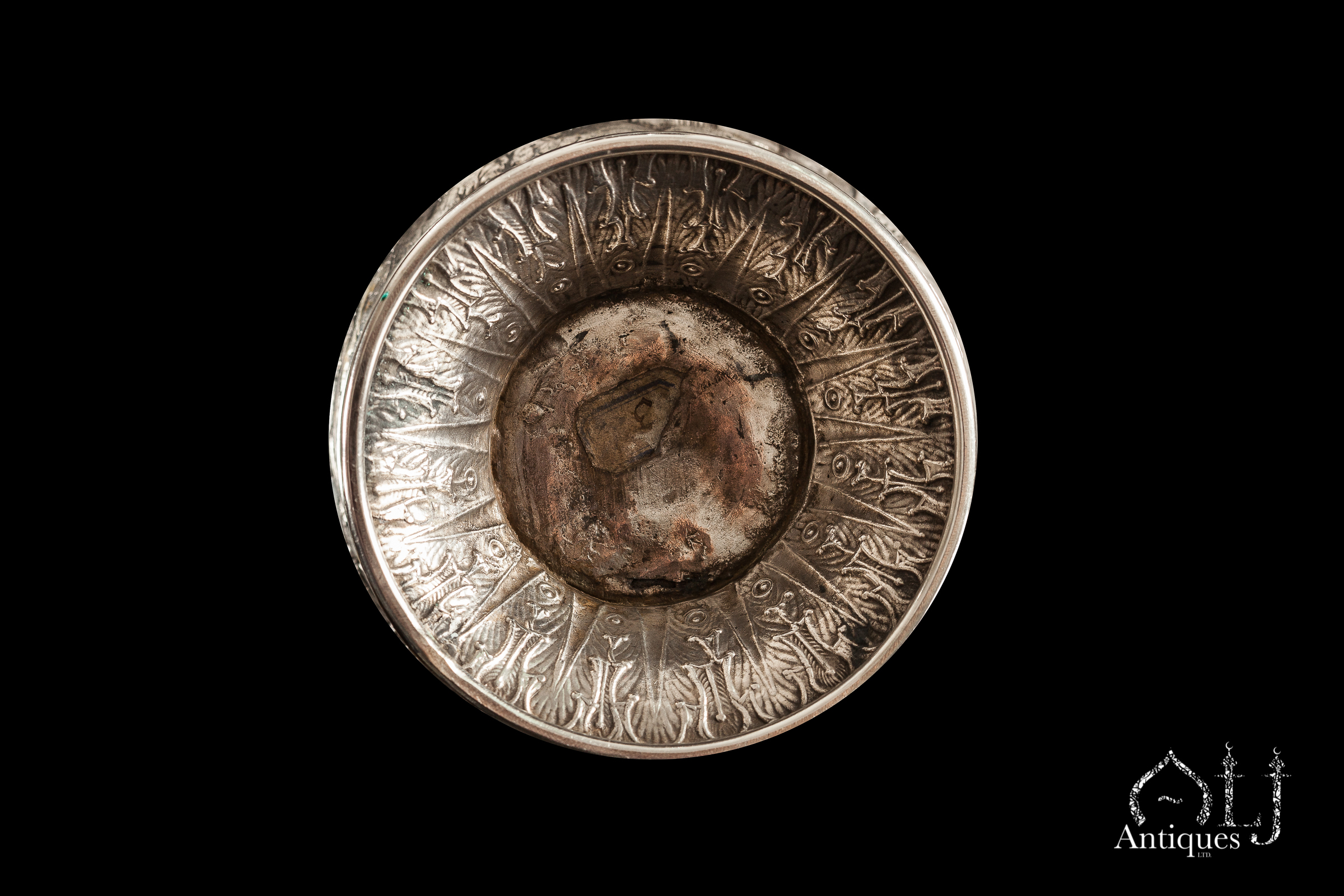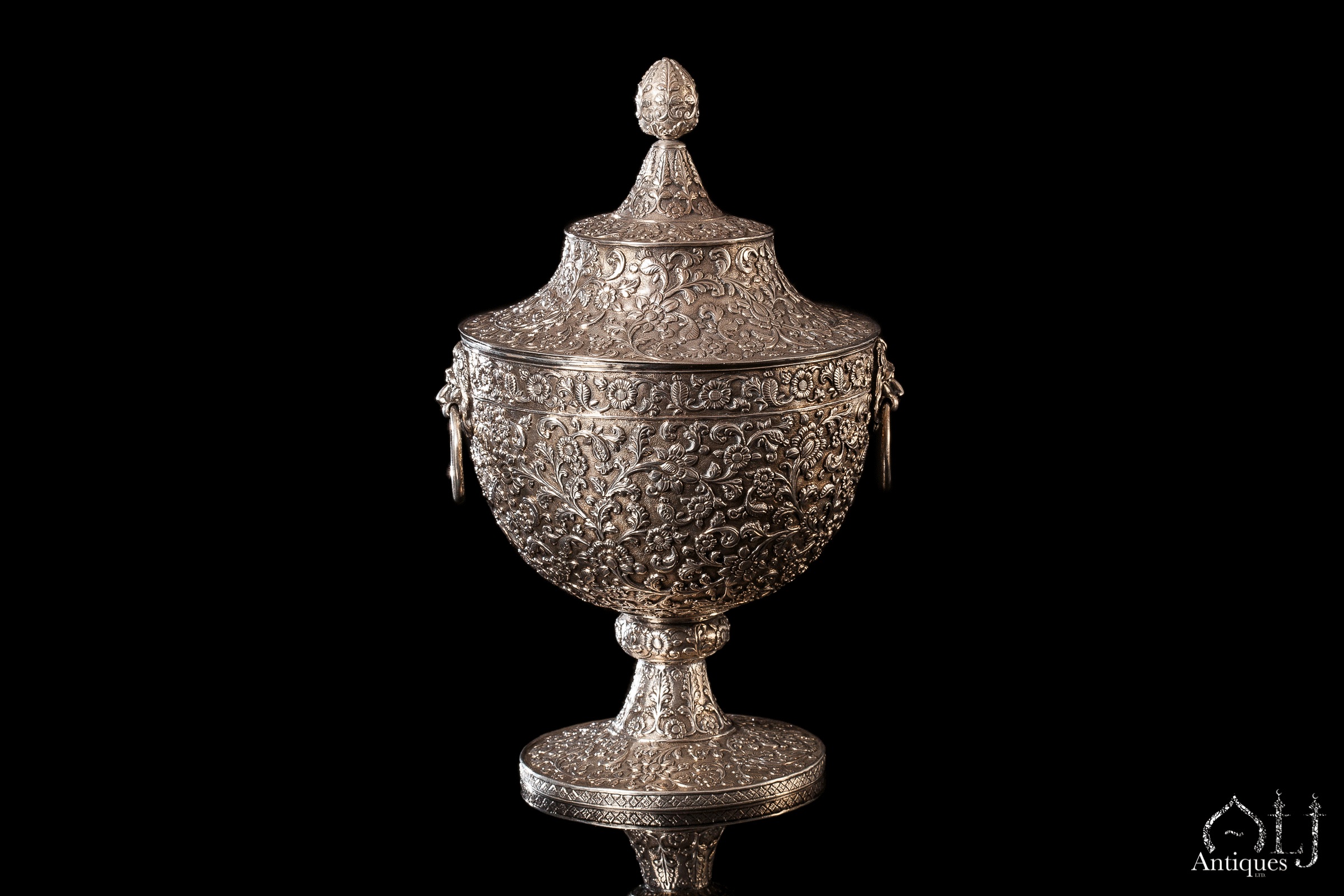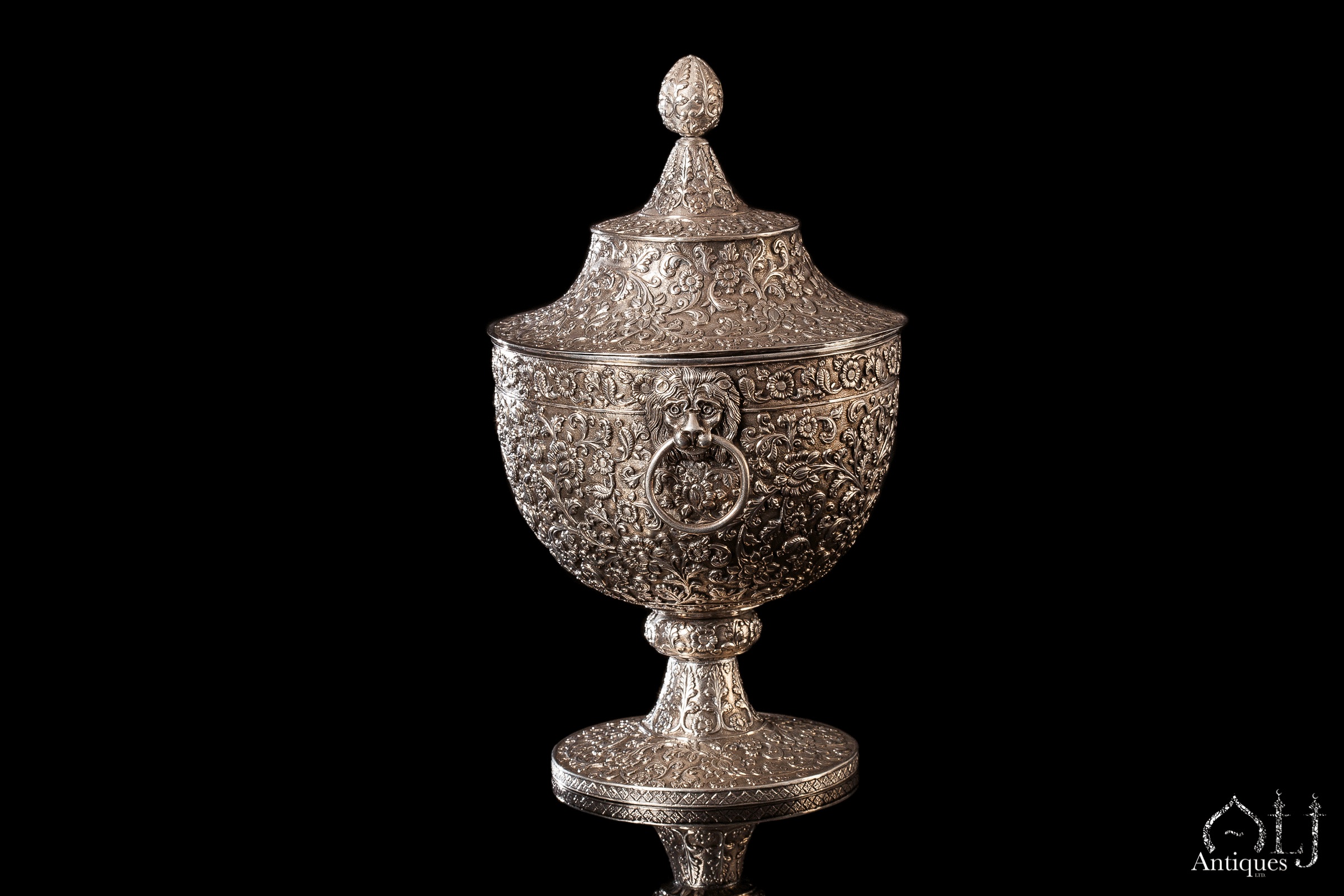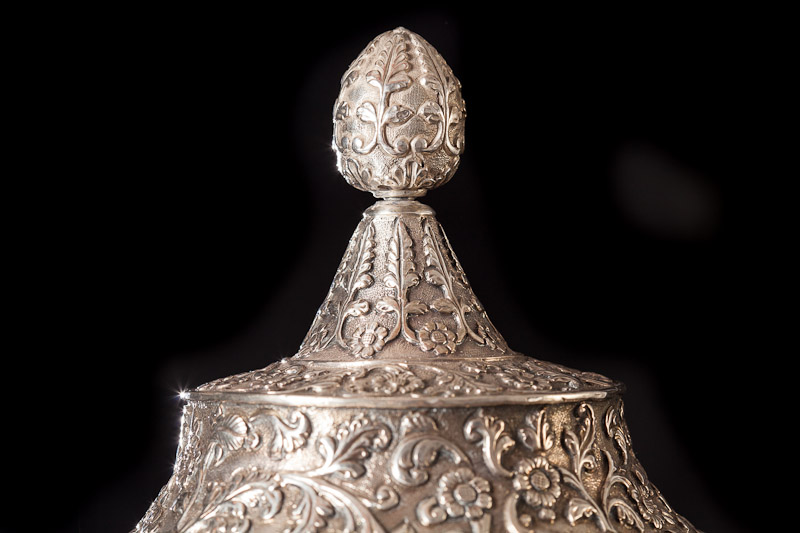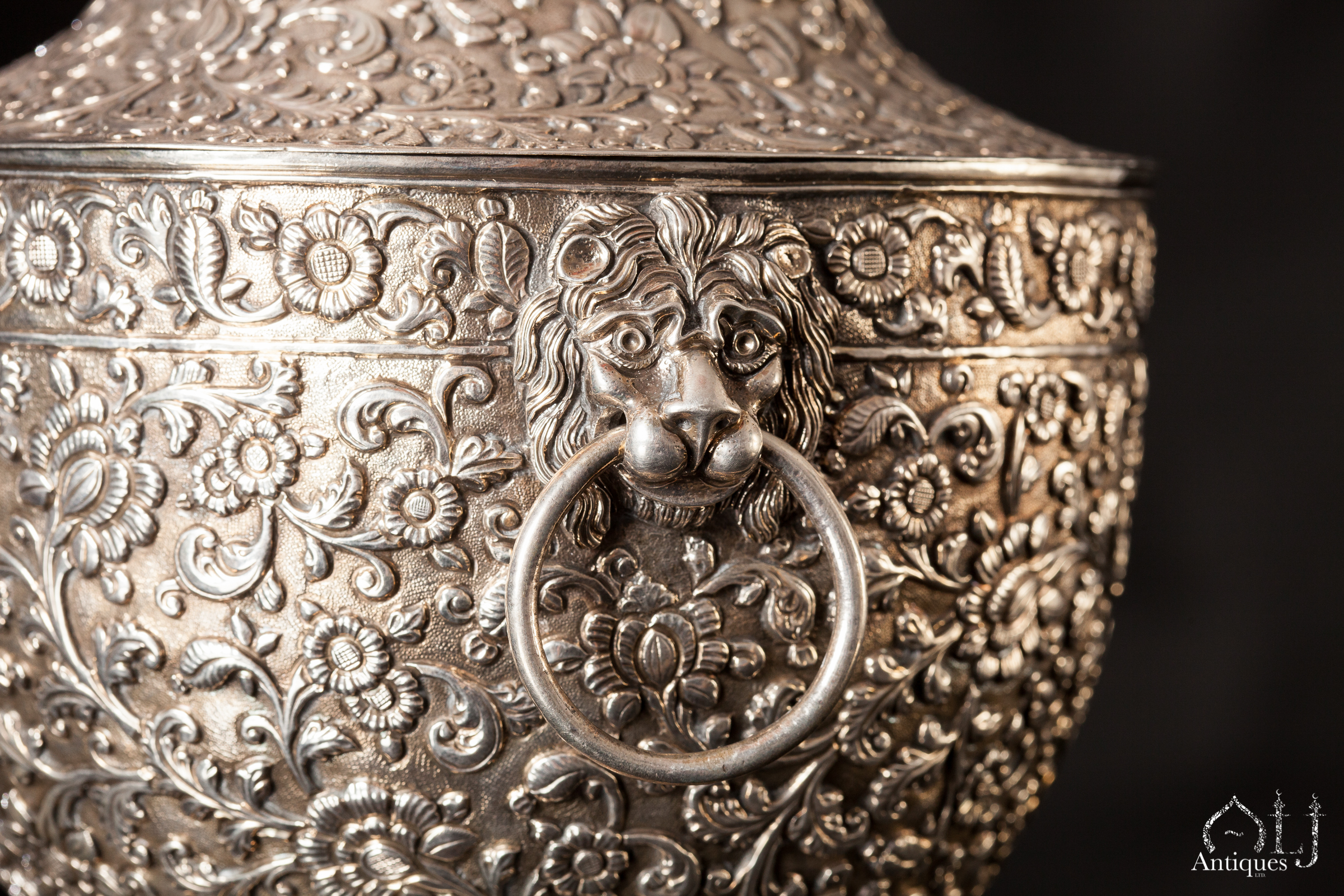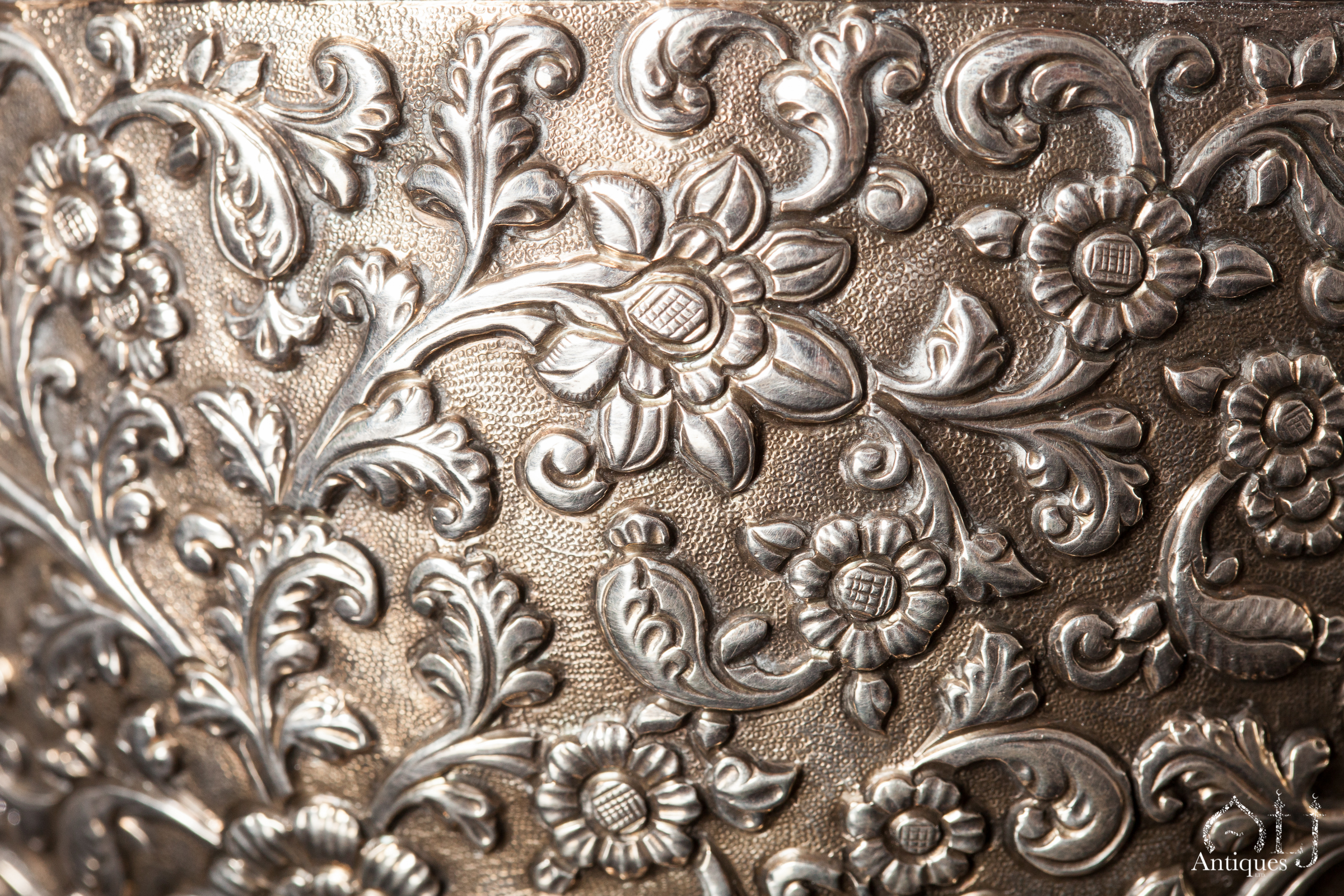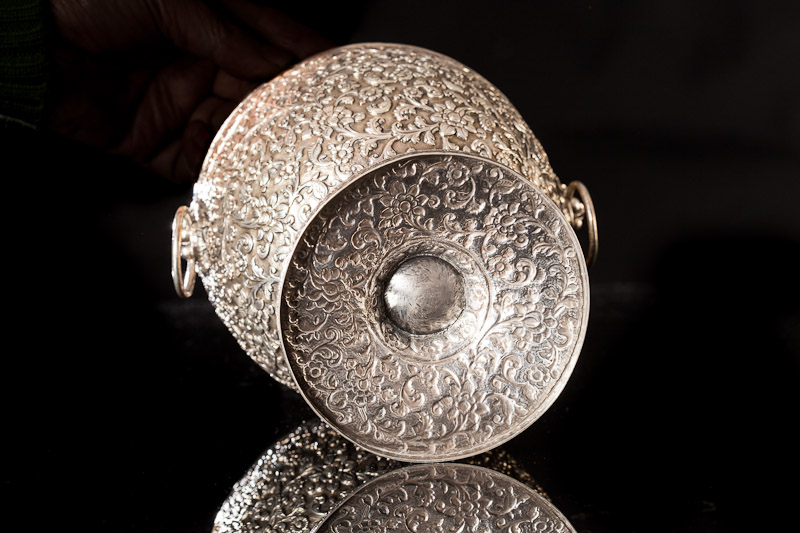Description
Generally Speaking, Mughal designs are famous and distinguished by the use of direct, simple, but rather detailed designs, the designs are rather simple, beautiful but the main focus is on the details.
The Mughal artists and their patrimonies, both adopt the principle that not to exaggerate the view of works of art by adding additional overlapping shapes and designs so that they become crowded.
The Mughal floral designs tend to only show the plant stems, branches, flower buds and blooming flowers protruding on a smooth surface with the intention to leave empty spaces around the flowering plants allowing the viewer to focus easily on the strength, beauty and simplicity of the design without feeling a state of loss in exaggerating additional details so that it becomes difficult for the beholder to understand, realize and enjoy the wonderful design, similar designs can be found on Mughal architectural monuments, paintings and textiles.
Our current beautiful and rare footed sugar bowl and cover is made during the Mughal Dynasty era in India and is worked in repousse technique on high grade silver metal and beautifully decorated with floral motifs with typical Mughal motifs of floral scrolls spreading harmoniously all over the item’s body the lid’s finial is designed in the form of an acorn.
The body of the footed bowl is attached with two beautifully chased lion heads soldered on each side of the bowl and fitted with ring handles clasped firmly in the mouth of a lion’s head.
Sometimes its difficult to judge the whereabouts and the origins of certain designs, for Although the item is Mughal and it’s very possible that the item’s shape and design was originated in India but the lion heads handles motif was also widely implemented in Europe and is also it might had been influenced by the European architectural and other works of art in the French Empire style from around 1760.
Therefore the item’s form may well also be considered as colonial for it is also showing strong European Regency style and European neo-classical influence.
It is worth mentioning that the lion in the Indian mythology is always associated with royalty, power and high status.
This piece was most likely made for an Indian royalty or a European dignitary residing or living in India.
Although the bowl has typical Kutch-style decoration, this might suggest that the very famous silversmith Mr. Oomersi Mawji who had emerged famously on the second half of the 19th. Century and is known for making more of Colonial European shapes but with Mughal style floral designs and hunting scenes.
Therefore we suggest that probably Mr. Oomersi Mawji was widely influenced by the style and design that was used on this lot but with one main difference which is the use of mostly densely floral decorated designs with no gaps is been left on the objects without decoration.

